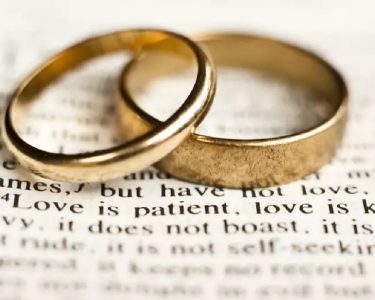IS LOVE AT FIRST SIGHT REAL?
Theresa E DiDonato
A compelling idea, but is there scientific evidence to support it?
Love at first sight – is it possible? Do people really meet and in moments simply know they’re meant to be? New evidence suggests, yes.
The idea is so wonderfully romantic. Two strangers see each other “across a crowded room,” there’s an instant attraction, an electric spark, and suddenly they’ve found their match and never look back. In a world where dating often requires a lot of work – work that comes with disappointment, rejection, and uncertainty – falling in love at first sight has strong appeal.
People say it happens all the time. If you start with personal testaments, love at first sight seems like the real deal. Prince Harry reportedly experienced it, saying he knew Meghan Markle was the one for him the “very first time we met” (BBC interview). Portia de Rossi said pretty much the same about Ellen Degeneres, as did Matt Damon about his wife, Luciana. Of course, celebrities don’t have the monopoly on love at first sight. Some evidence suggests about 60% of people have experienced it (Naumann, 2004). You probably have friends who avow this happened to them; or maybe you yourself just “knew” in that very first moment you laid eyes on your current partner… but did that really happen?
Rarely have scientists empirically studied love at first sight, but new research out of the Netherlands offers evidence in support of the phenomenon (Zsok, Haucke, De Wit, & Barelds, 2017). The researchers asked nearly 400 men and women to complete surveys about potential romantic partners immediately after first encountering those individuals. This included indicating their agreement with the statement, “I am experiencing love at first sight with this person,” as well as reporting how physical attractive they found the person, and how much passion (i.e., sexual attraction) they felt. Data collection was dispersed across three contexts: online and in the lab (where pictures of potential partners were shown), and in person (where individuals saw each other face-to-face).
With a real time measure of love at first sight, what exactly did Zsoks and colleagues (2017) learn?
- Love at first sight isn’t just biased memory. People really do report experiencing love at first sight in the instant they encounter a person. It’s a strong initial attraction that could later become a relationship. One compelling counter argument – that people have biased memories and essentially create the illusion of having fall for each other instantly – isn’t an appropriate explanation for all cases of love at first sight.
- You’re more likely to feel love at first sight with beautiful people. In this study, strangers were more likely to report experiencing love at first sight with physically attractive others; in fact, one rating higher in attractiveness on the scale that the researchers used corresponded with a 9 times greater likelihood that others would report that electric love-at-first-sight feeling.
- Men report love at first sight more than women. Why this is exactly, the researchers aren’t sure, but it begs more investigation. Might women be less inclined to this experience because they are more selective in whom they might date (as other research has shown)? Men might, for example, report this experience with multiple potential partners… whether it translates into a relationship is another question.
- Love at first sight isn’t usually mutual. A comparison of participant reports of love at first sight showed that it’s typically a one-sided phenomenon; this suggests that shared instant love (think: Sleepless in Seattle) isn’t very common. The researchers suspect, however, that one partner’s intense initial experience could help shape the other person’s recollection, shifting it towards a belief that he or she also experienced love at first sight.
- Love at first sight isn’t really “love.” The kind of qualities that are known to reflect love – intimacy, commitment, passion – are not particularly strong in those first moments when people say they’ve fallen in love at first sight. At least, these emotions are not experienced to the same degree as people who are in established relationships. The extent to which people in relationships report feeling intimacy and commitment and passion towards their partners far exceeds reports of these emotions by people experience love at first sight. Yet, the love-at-first-sight experience appears open to these emotions to a greater extent than first meetings where love at first sight is not reported.
In sum, the science favors the romantics. Love at first sight actually is experienced by people, but it’s not so much “love” or “passion”… instead, it’s a strong pull or attraction that makes someone particularly open to the possibilities of a relationship (Zsoks et al., 2017). Love at first sight can happen multiple times, and maybe the instances where it fizzles or simple never translates into a relationship are forgotten. But, when love at first sight does launch a sustained relationship, the story is a great one.
References
Naumann, E. (2004). Love at first sight: The stories and science behind instant attraction. Sourcebooks, Inc..
Zsok, F., Haucke, M., De Wit, C. Y., & Barelds, D. P. (2017). What kind of love is love at first sight? An empirical investigation. Personal Relationships, 24, 869-885.



